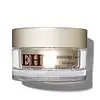What's inside
What's inside
 Key Ingredients
Key Ingredients

 Benefits
Benefits

 Concerns
Concerns

No concerns
 Ingredients Side-by-side
Ingredients Side-by-side

Vitis Vinifera Seed Oil
EmollientPrunus Amygdalus Dulcis Oil
Skin ConditioningCaprylic/Capric Triglyceride
MaskingCetearyl Alcohol
EmollientPEG-8 Beeswax
EmulsifyingPEG-6 Caprylic/Capric Glycerides
EmulsifyingPEG-60 Almond Glycerides
EmulsifyingSorbitan Stearate
EmulsifyingPalmitic/Stearic Triglyceride
Limonene
PerfumingCitrus Aurantium Dulcis Peel Oil
MaskingSilica
AbrasiveGlycerin
HumectantPhenoxyethanol
PreservativeBenzyl Alcohol
PerfumingCitrus Aurantium Bergamia Fruit Oil
MaskingCitrus Aurantium Amara Flower Oil
MaskingCitrus Nobilis Peel Oil
MaskingJuniperus Virginiana Oil
MaskingWater
Skin ConditioningLecithin
EmollientLinalool
PerfumingButylene Glycol
HumectantOctyldodecyl PCA
EmollientMenthyl PCA
HumectantTocopherol
AntioxidantAscorbyl Palmitate
AntioxidantCrithmum Maritimum Extract
Skin ConditioningHelianthus Annuus Seed Oil
EmollientMoringa Oleifera Seed Extract
Skin ConditioningJasminum Officinale Flower Oil
PerfumingRosa Damascena Flower Oil
MaskingDisodium Phosphate
BufferingCitronellol
PerfumingCitric Acid
BufferingGeraniol
PerfumingCitral
PerfumingVitis Vinifera Seed Oil, Prunus Amygdalus Dulcis Oil, Caprylic/Capric Triglyceride, Cetearyl Alcohol, PEG-8 Beeswax, PEG-6 Caprylic/Capric Glycerides, PEG-60 Almond Glycerides, Sorbitan Stearate, Palmitic/Stearic Triglyceride, Limonene, Citrus Aurantium Dulcis Peel Oil, Silica, Glycerin, Phenoxyethanol, Benzyl Alcohol, Citrus Aurantium Bergamia Fruit Oil, Citrus Aurantium Amara Flower Oil, Citrus Nobilis Peel Oil, Juniperus Virginiana Oil, Water, Lecithin, Linalool, Butylene Glycol, Octyldodecyl PCA, Menthyl PCA, Tocopherol, Ascorbyl Palmitate, Crithmum Maritimum Extract, Helianthus Annuus Seed Oil, Moringa Oleifera Seed Extract, Jasminum Officinale Flower Oil, Rosa Damascena Flower Oil, Disodium Phosphate, Citronellol, Citric Acid, Geraniol, Citral
Water
Skin ConditioningPropanediol
SolventPEG-6 Caprylic/Capric Glycerides
EmulsifyingGlycerin
Humectant1,2-Hexanediol
Skin ConditioningCaprylhydroxamic Acid
Niacinamide
SmoothingBiosaccharide Gum-1
HumectantGlucamine
HumectantSodium Hyaluronate
HumectantSodium Lauroyl Lactylate
EmulsifyingRhamnose
HumectantGlucose
HumectantGlucuronic Acid
BufferingCeramide NP
Skin ConditioningCeramide AP
Skin ConditioningPhytosphingosine
Skin ConditioningCholesterol
EmollientXanthan Gum
EmulsifyingCarbomer
Emulsion StabilisingCeramide EOP
Skin ConditioningWater, Propanediol, PEG-6 Caprylic/Capric Glycerides, Glycerin, 1,2-Hexanediol, Caprylhydroxamic Acid, Niacinamide, Biosaccharide Gum-1, Glucamine, Sodium Hyaluronate, Sodium Lauroyl Lactylate, Rhamnose, Glucose, Glucuronic Acid, Ceramide NP, Ceramide AP, Phytosphingosine, Cholesterol, Xanthan Gum, Carbomer, Ceramide EOP
 Reviews
Reviews

Ingredients Explained
These ingredients are found in both products.
Ingredients higher up in an ingredient list are typically present in a larger amount.
Glycerin is already naturally found in your skin. It helps moisturize and protect your skin.
A study from 2016 found glycerin to be more effective as a humectant than AHAs and hyaluronic acid.
As a humectant, it helps the skin stay hydrated by pulling moisture to your skin. The low molecular weight of glycerin allows it to pull moisture into the deeper layers of your skin.
Hydrated skin improves your skin barrier; Your skin barrier helps protect against irritants and bacteria.
Glycerin has also been found to have antimicrobial and antiviral properties. Due to these properties, glycerin is often used in wound and burn treatments.
In cosmetics, glycerin is usually derived from plants such as soybean or palm. However, it can also be sourced from animals, such as tallow or animal fat.
This ingredient is organic, colorless, odorless, and non-toxic.
Glycerin is the name for this ingredient in American English. British English uses Glycerol/Glycerine.
Learn more about GlycerinThis ingredient is derived from caprylic and capric acids. It is an emulsifier with emollient properties.
According to the manufacturer, it is hydrophilic and soluble in aqueous solutions (water). They also state this ingredient is stable in a medium pH range (~5 - 8).
As an emulsifier, it helps make oils and oil-soluble ingredients more soluble in water.
Learn more about PEG-6 Caprylic/Capric GlyceridesWater. It's the most common cosmetic ingredient of all. You'll usually see it at the top of ingredient lists, meaning that it makes up the largest part of the product.
So why is it so popular? Water most often acts as a solvent - this means that it helps dissolve other ingredients into the formulation.
You'll also recognize water as that liquid we all need to stay alive. If you see this, drink a glass of water. Stay hydrated!
Learn more about Water